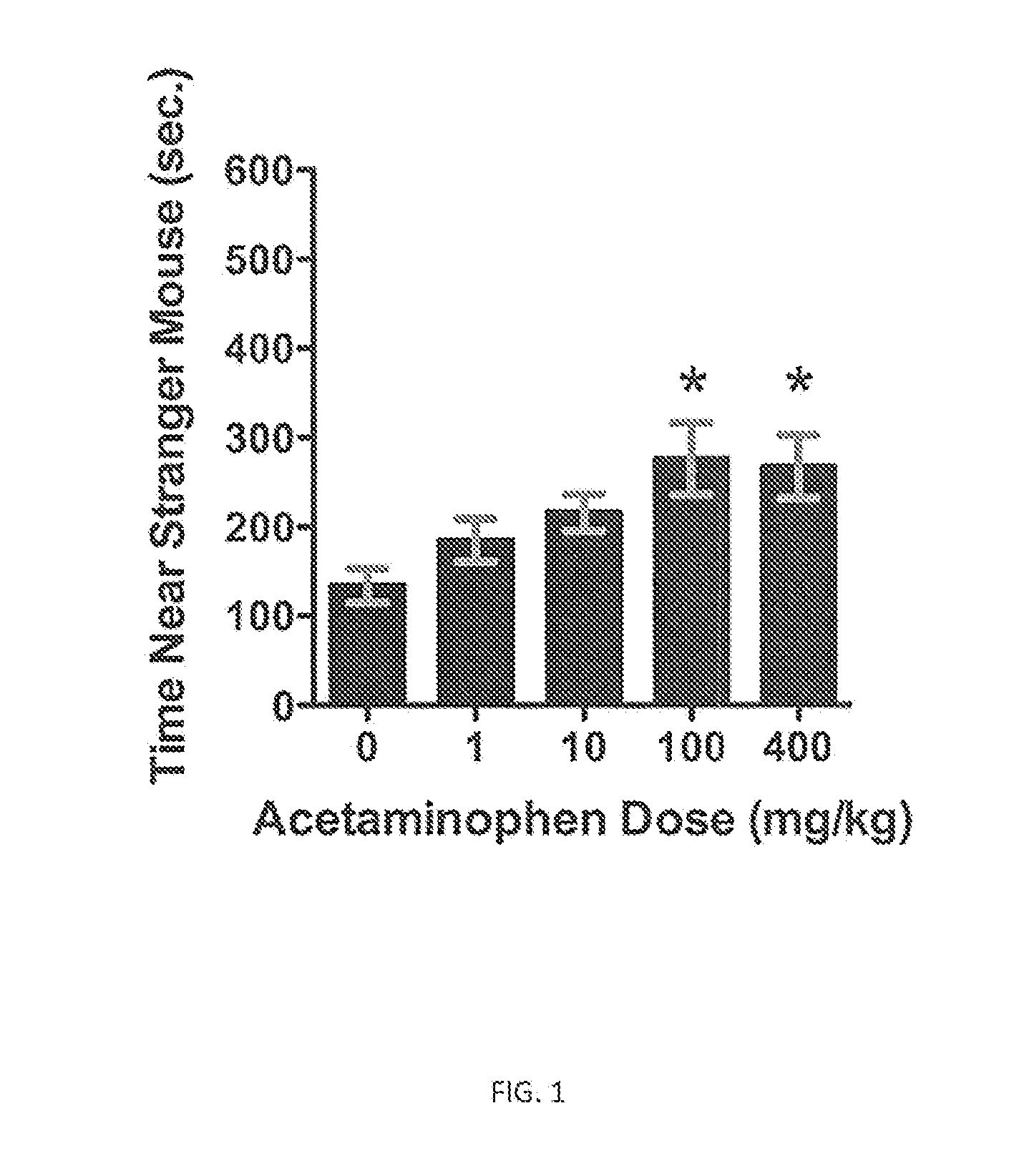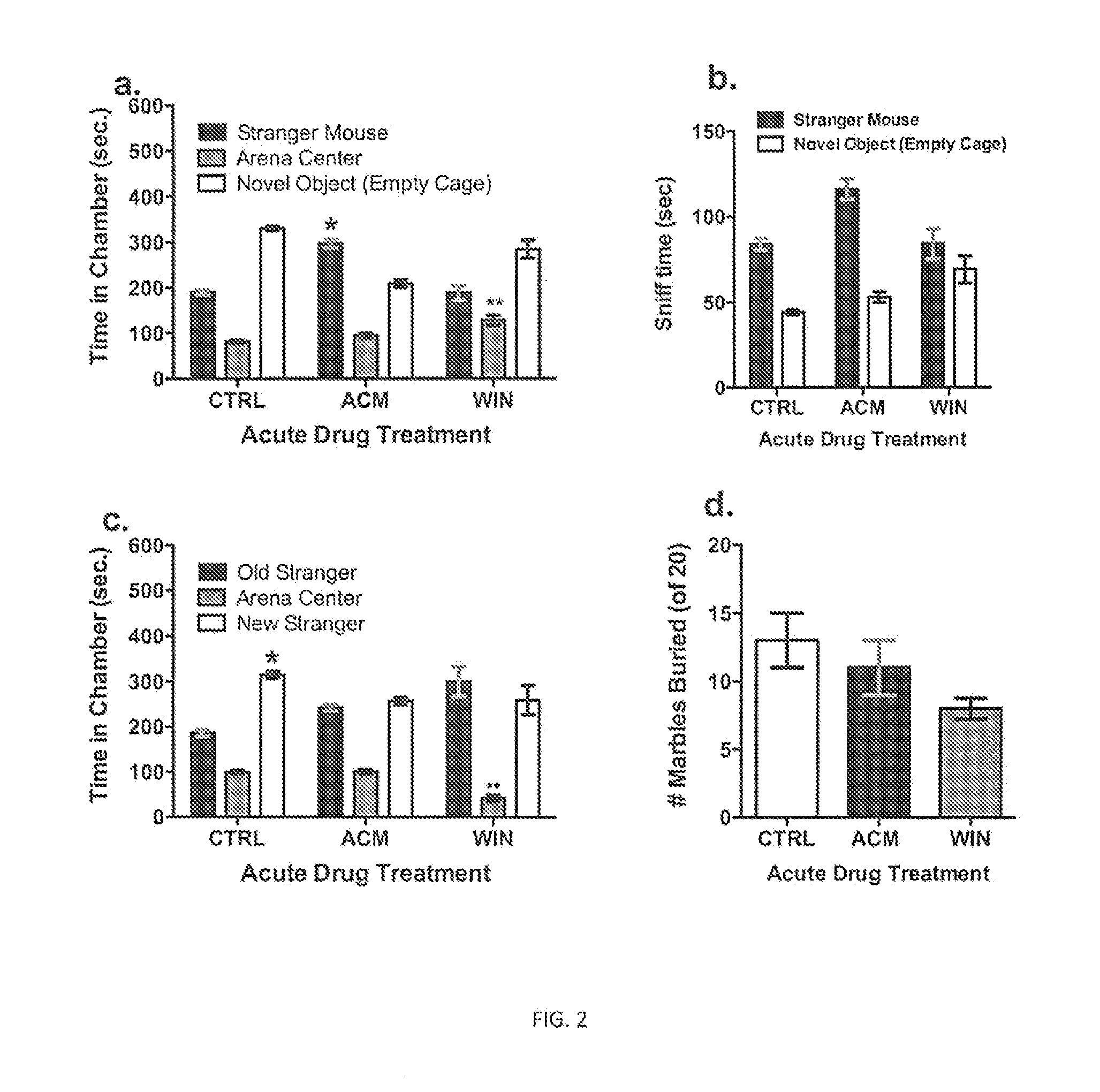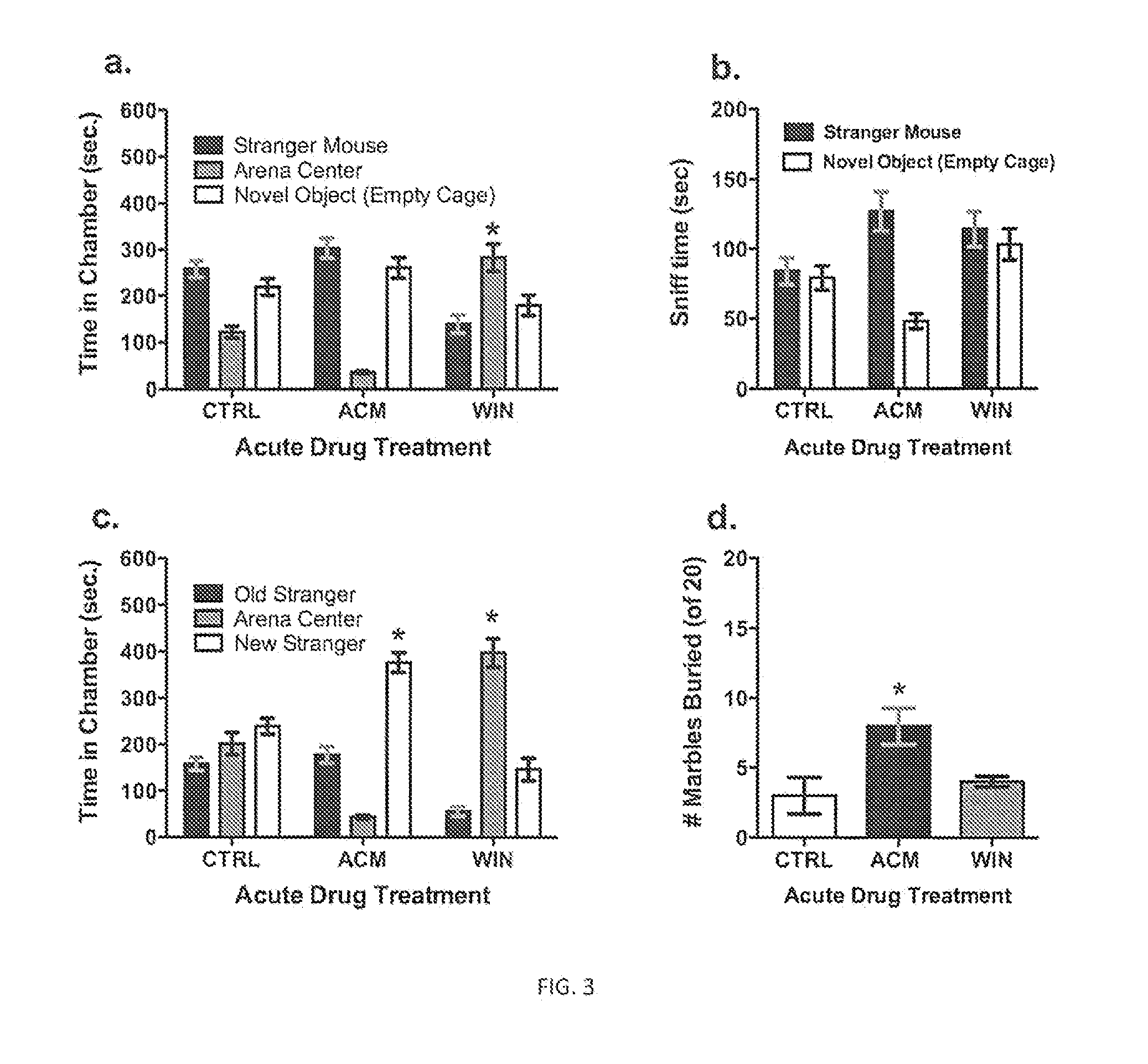Method for predicting autism spectrum disorders by cannabinoid and cannabinoid receptor expression
a cannabinoid and receptor technology, applied in the field of cannabinoid and cannabinoid receptor expression prediction method of autism spectrum disorders, can solve problems such as abnormal cognitive functioning accompanied by abnormalities
- Summary
- Abstract
- Description
- Claims
- Application Information
AI Technical Summary
Benefits of technology
Problems solved by technology
Method used
Image
Examples
example 1
Anandamide Levels as Indicator of Autistic Behavior
[0041]Autism is associated with impairments in social interaction; communication; and restricted interests and repetitive behavior. The ability to study the physiological and molecular mechanisms associated with this disease is hampered by suitable models. However, several inbred mouse strains demonstrate inherent behaviors paralleling these sociability impairments. These include the strains BTBR and 129S1 / SvImJ (Moy, et al. Behay. Brain Res., 176: 4-20 (2007); McFarlane, et al., Genes Brain Behay., 7: 152-163 (2008); Defensor, et al., Behay. Brain Res., 217: 302-308 (2010); Spencer, et al., Autism Res., 4: 40-56 (2011)).
[0042]The social behavior of BTBR mice is sensitive to changes in serotonin (5-HT) neurotransmission and anxiolytics (Gould, et al., J. Neurochem., 116: 291-303 (2011)). Furthermore, administration of the endocannabinoid agonist anandamide or high doses of the pain reliver acetaminophen promote social interactions i...
example 2
Endocannabinoid Receptor Level Analysis
[0059]Cannabinoid receptors modulate serotonin signaling in the cingulated cortex region. Serotonergic tone is greater in the frontal cortex of fatty acid amide hydrolase (FAAH) knock-out mice. Their social behavior is enhance, presumably due to higher levels of endogeneous cannabinoid-agonist anandamide (Cassano, et al., Pschopharmacology. 214: 465-476 (2011)). In CB1 knock-out mice serotonergic tone is low, extracellular serotonin levels and serotonin synthesis are elevated in the frontal cortex with a reduced sociability in stressful new habitats relative to wild-type mice (Aso, et al., J. Neurochem. 109: 935-944 (2009); Haller, et al., Eur. J. Neurosci., 19: 1906-1912 (2004)).
[0060]Endocannibinoids can be indirectly assessed by measuring expression of endocannibinoid receptors. In a preferred embodiment, positron emission tomography (PET) is used to measure CB1 receptor levels in the brain. In other embodiments, PET can be combined with co...
example 3
Diagnosis of Autism or ASD by Endocannabinoid Metabolite Turnover
[0065]Studies suggest that serotonin is important for aspects of prenatal and postnatal brain development (Chugani, D. D., Mol. Psychiatry 7:S16-S17 (2002); Gasper, et al, Nat. Rev. Neurosci 4:1002-1012 (2003)). Serotonergic function has been reported in children with autism (Hoshino, et al., Neuropsychobiology 11:22-27 (1984); Anderson, et al., J. Child Psychol. Psychiatry 28:885-900 (1987); Cook, et al., J. Neuropsychicatry Clin. Neurosci. 2:268-274 (1990). It was subsequently shown that serotonin synthesis is altered in patients with autism (Chandana, et al., Int. J. Devl. Neuroscience 23:171-182 (2005). In these studies, children with autism exhibit a difference in the change with age in whole brain serotonin synthesis capacity, compared to age matched non-autistic children. Additionally, autistic children also exhibited abnormal cortical asymmetries of serotonin synthesis affecting either the left or right cortex....
PUM
| Property | Measurement | Unit |
|---|---|---|
| diameter | aaaaa | aaaaa |
| depth | aaaaa | aaaaa |
| depth | aaaaa | aaaaa |
Abstract
Description
Claims
Application Information
 Login to View More
Login to View More - R&D
- Intellectual Property
- Life Sciences
- Materials
- Tech Scout
- Unparalleled Data Quality
- Higher Quality Content
- 60% Fewer Hallucinations
Browse by: Latest US Patents, China's latest patents, Technical Efficacy Thesaurus, Application Domain, Technology Topic, Popular Technical Reports.
© 2025 PatSnap. All rights reserved.Legal|Privacy policy|Modern Slavery Act Transparency Statement|Sitemap|About US| Contact US: help@patsnap.com



